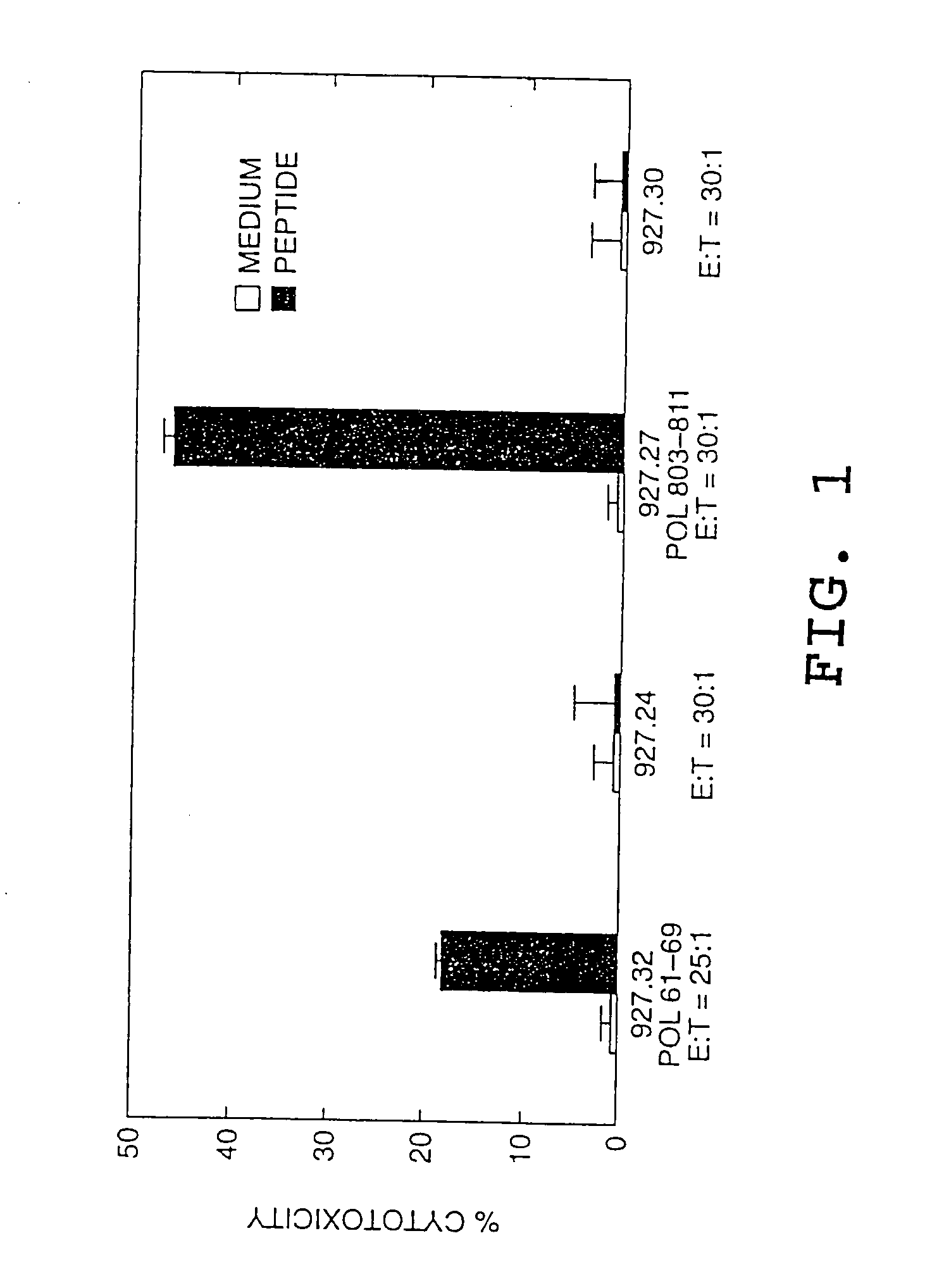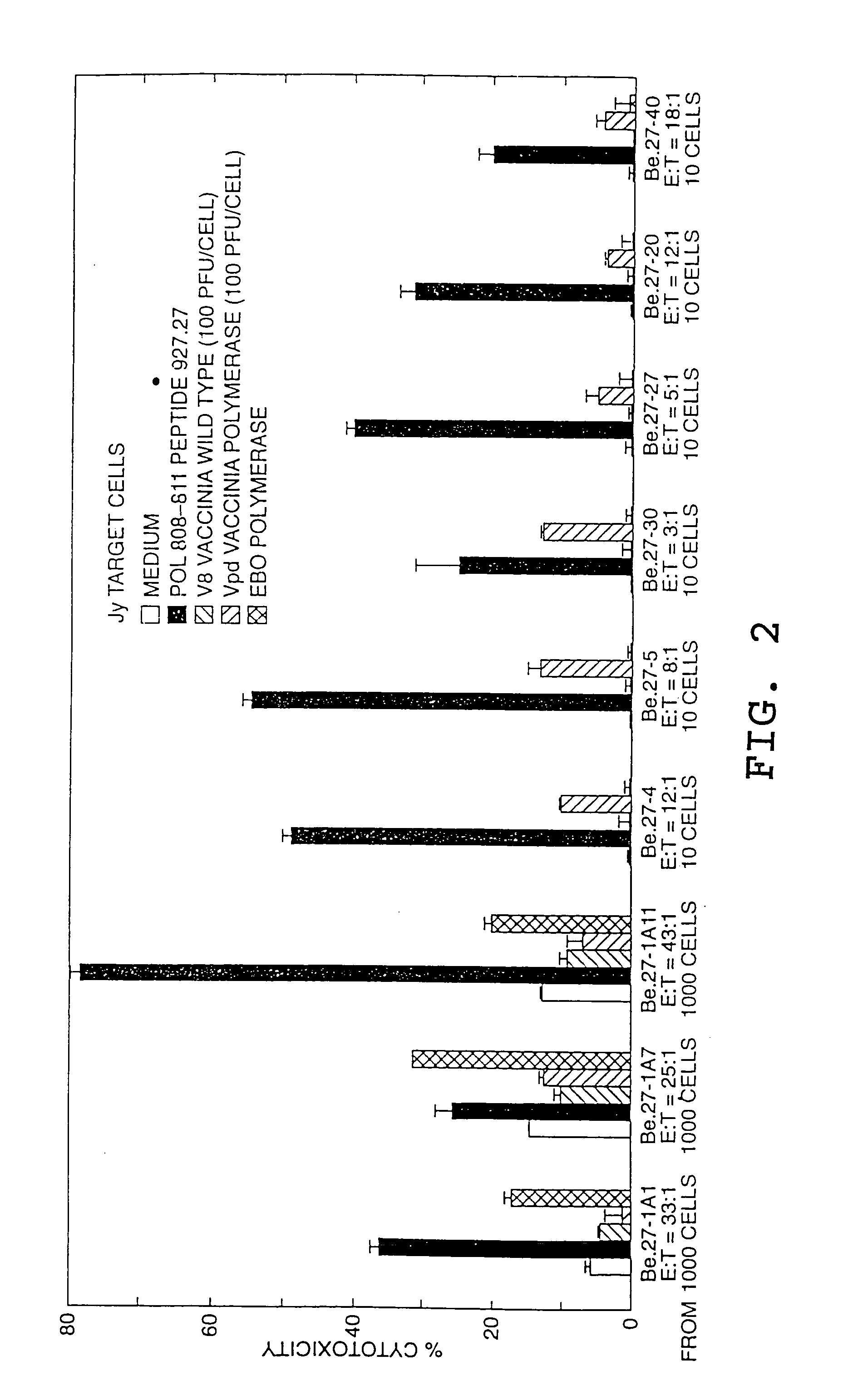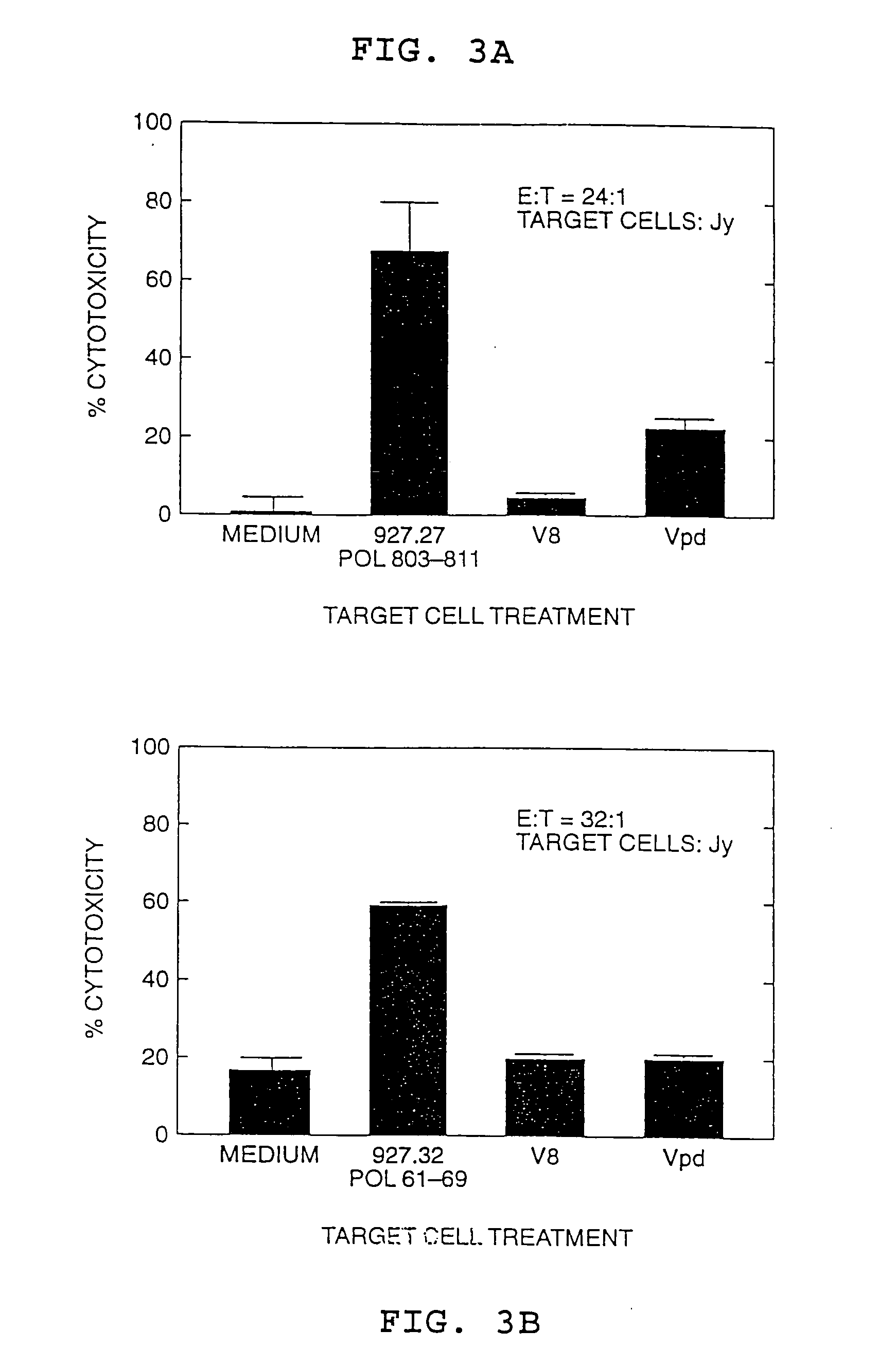Peptides for inducing cytotoxic T lymphocyte responses to hepatitis B virus
a t lymphocyte and peptide technology, applied in the field of peptides for inducing cytotoxic t lymphocyte responses to hepatitis b virus, can solve the problems of difficult to accurately predict the sequence of an antigenic protein, the contribution of ctls to immunity to hbv antigens is difficult to assess, and the sequence of ctl-recognizable epitopes is not yet predictable, so as to prevent hbv infection, enhance t lymphocy
- Summary
- Abstract
- Description
- Claims
- Application Information
AI Technical Summary
Benefits of technology
Problems solved by technology
Method used
Image
Examples
example i
HLA-Restricted CTL Response To HBV Polymerase Epitopes
[0077] This Example describes the identification of an HLA-A2 restricted CTL response to two HBV polymerase peptides in a patient with acute viral hepatitis. The epitopes are present in amino acid sequences HBpol61-69 [Seq ID No. 1] Gly-Leu-Tyr-Ser-Ser-Thr-Val-Pro-Val (GLYSSTVPV) (also designated peptide 927.32) and HBpol803-811 [Seq ID No. 4] Ser-Leu-Tyr-Ala-Asp-Ser-Pro-Ser-Val (SLYADSPSV) (also designated peptide 927.27).
[0078] The CTL induced by the HBpol peptides were identified in PBMCs from a patient with acute hepatitis according to the procedure set forth in Example VI of pending application U.S. Ser. No. 07 / 935,898, except that the PMBCs were stimulated with individual peptides rather than peptide mixtures. The resulting CTL lines and / or clones were then tested for the ability to kill HLA-A2 matched target cells that were either pulsed with the peptide or that expressed the corresponding endogenous polymerase antigen (...
example ii
[0080] This example demonstrates that acutely infected patients with clinically apparent viral hepatitis develop an HLA class I restricted CTL response to multiple epitopes in the conserved functional domains of the HBV polymerase protein, while persistently infected patients with chronic hepatitis and normal uninfected controls do not.
[0081] Nine HLA-A2 positive patients with acute hepatitis B, nine patients with chronic hepatitis B and ten healthy uninfected subjects were studied (Table II). The diagnosis of acute hepatitis B was based on clinical and biochemical evidence of acute liver injury according to standard diagnostic criteria, together with serological evidence of acute HBV infection, i.e., hepatitis B surface antigen (HBsAg, hepatitis B e antigen (HBeAg) and IgM anti-HBc antibody (IgM HBc-Ab), and the absence of serologic evidence of hepatitis delta or hepatitis C virus infection. Six of the nine patients recovered completely with normalization of serum transaminases an...
PUM
| Property | Measurement | Unit |
|---|---|---|
| Fraction | aaaaa | aaaaa |
| Fraction | aaaaa | aaaaa |
| Fraction | aaaaa | aaaaa |
Abstract
Description
Claims
Application Information
 Login to View More
Login to View More - R&D
- Intellectual Property
- Life Sciences
- Materials
- Tech Scout
- Unparalleled Data Quality
- Higher Quality Content
- 60% Fewer Hallucinations
Browse by: Latest US Patents, China's latest patents, Technical Efficacy Thesaurus, Application Domain, Technology Topic, Popular Technical Reports.
© 2025 PatSnap. All rights reserved.Legal|Privacy policy|Modern Slavery Act Transparency Statement|Sitemap|About US| Contact US: help@patsnap.com



